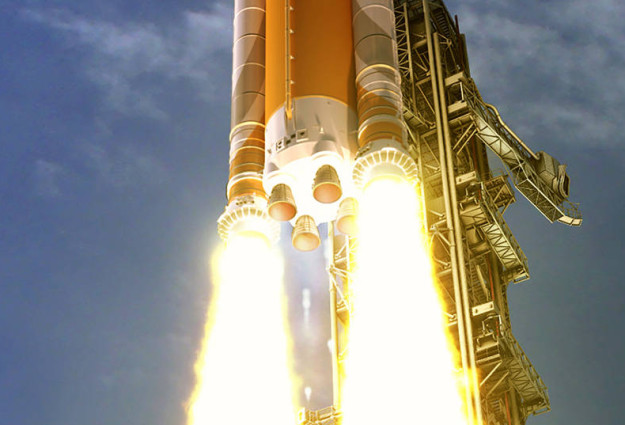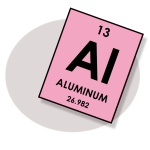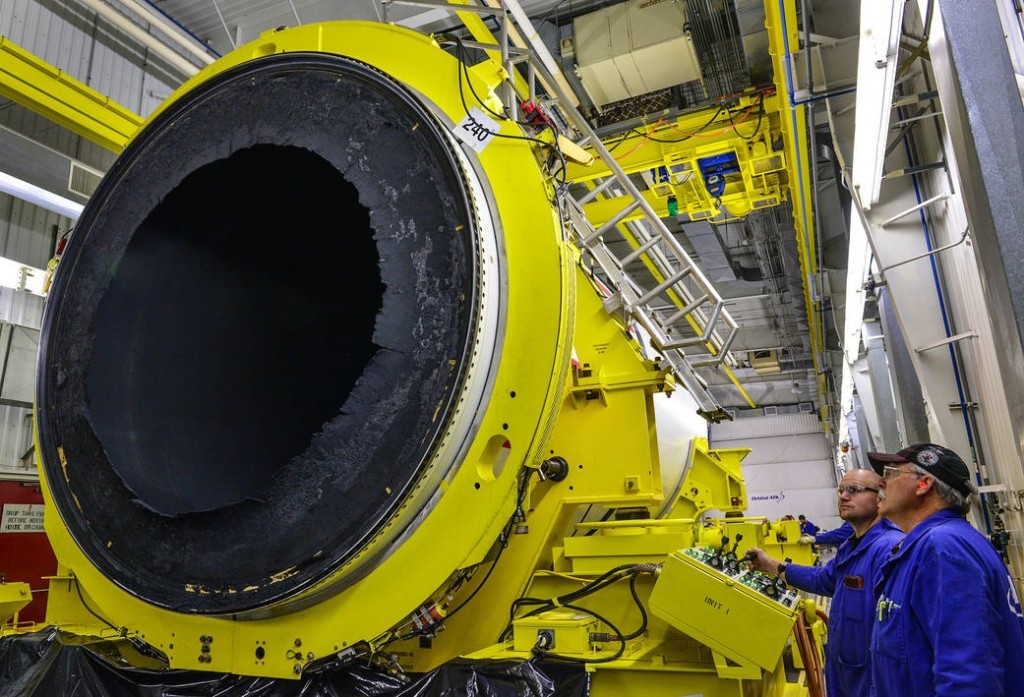Editor’s note: This is the second in a two-part series on the chemical reactions at the heart of rocket propulsion. Last week, we talked about the liquid engines of the SLS core stage , this week we’ll talk about the boosters.
By Beverly Perry
To give SLS extra power to get it off the ground, twin five-segment rocket boosters, built by Orbital ATK, tower more than 17 stories tall, burn six tons of solid propellant each second and help SLS break free from the clutches of Earth’s gravity.
Solid rocket fuel is the original rocket fuel, dating back to the early fireworks developed by the Chinese centuries ago. For the SLS boosters, aluminum powder serves as the fuel and a mineral salt, ammonium perchlorate, is the oxidizer.

 Aluminum is the most abundant metal on Earth. It’s also highly reactive. Aluminum is so reactive, in fact, that it’s not found naturally in its pure form but only in combination with other minerals. It’s this ability to readily combine with other metals that makes aluminum so useful. Every day, we use products made of aluminum alloys, or mixes with other metals, for things like beverage containers, covering leftovers, or iPhones. Amazingly, it’s this same stuff that fuels solid rocket boosters.
Aluminum is the most abundant metal on Earth. It’s also highly reactive. Aluminum is so reactive, in fact, that it’s not found naturally in its pure form but only in combination with other minerals. It’s this ability to readily combine with other metals that makes aluminum so useful. Every day, we use products made of aluminum alloys, or mixes with other metals, for things like beverage containers, covering leftovers, or iPhones. Amazingly, it’s this same stuff that fuels solid rocket boosters.
Ammonium perchlorate, the salt of perchloric acid and ammonia, is a powerful oxidizer (read: majorly explosive). In the boosters, the aluminum powder and ammonium perchlorate are held together by a binder, polybutadiene acrylonitrile, or PBAN. The mixture, with the consistency of a rubber eraser, is then packed into a steel case.

When it burns, oxygen from the ammonium perchlorate combines with aluminum to produce aluminum oxide, aluminum chloride, water vapor and nitrogen gas – and lots of energy.
 This reaction heats the inside of the solid rocket boosters to more than 5,000 degrees Fahrenheit, causing the water vapor and nitrogen to rapidly expand. Just like in the liquid engines, the nozzle funnels the expanding gases outward, creating thrust and lifting the rocket from the launch pad.
This reaction heats the inside of the solid rocket boosters to more than 5,000 degrees Fahrenheit, causing the water vapor and nitrogen to rapidly expand. Just like in the liquid engines, the nozzle funnels the expanding gases outward, creating thrust and lifting the rocket from the launch pad.
Compared to liquid engines, solid motors have a lower specific impulse – the measure rocket fuel efficiency that describes thrust per amount of fuel burned. However, the propellant is dense and burns quite quickly, generating a whole lot of thrust in a short time. And once they’ve burned their propellant and helped propel SLS into space, the boosters are discarded, lightening the load for the rest of the spaceflight.
So that’s it really. Make water and shoot off an enormous firecracker and you’ve got: Rocket Chemistry. On this scale though, you can’t try this at home. Watch the real show when SLS launches in 2018.
Join in the conversation: Visit our Facebook page to comment on the post about this blog. We’d love to hear your feedback!

